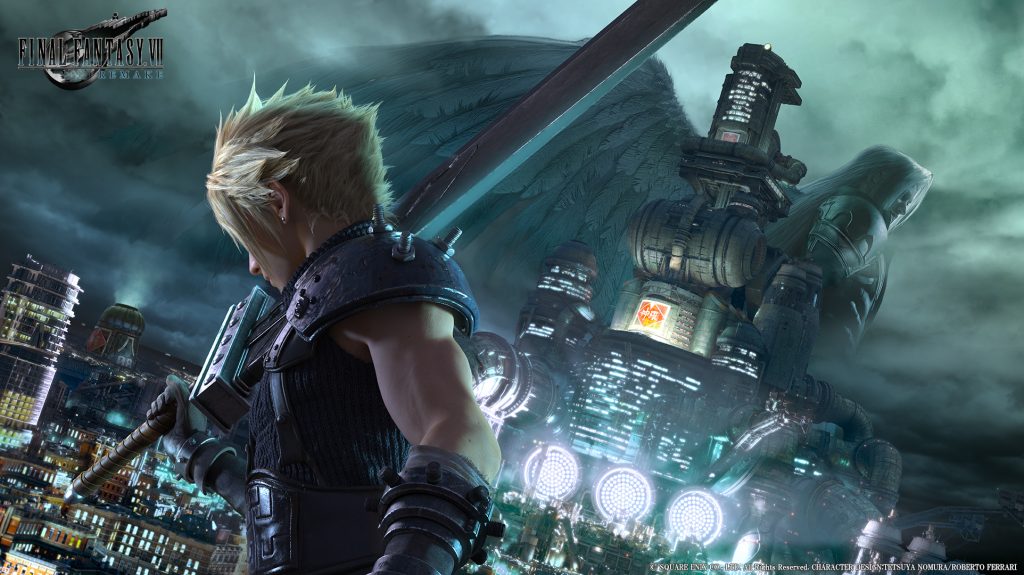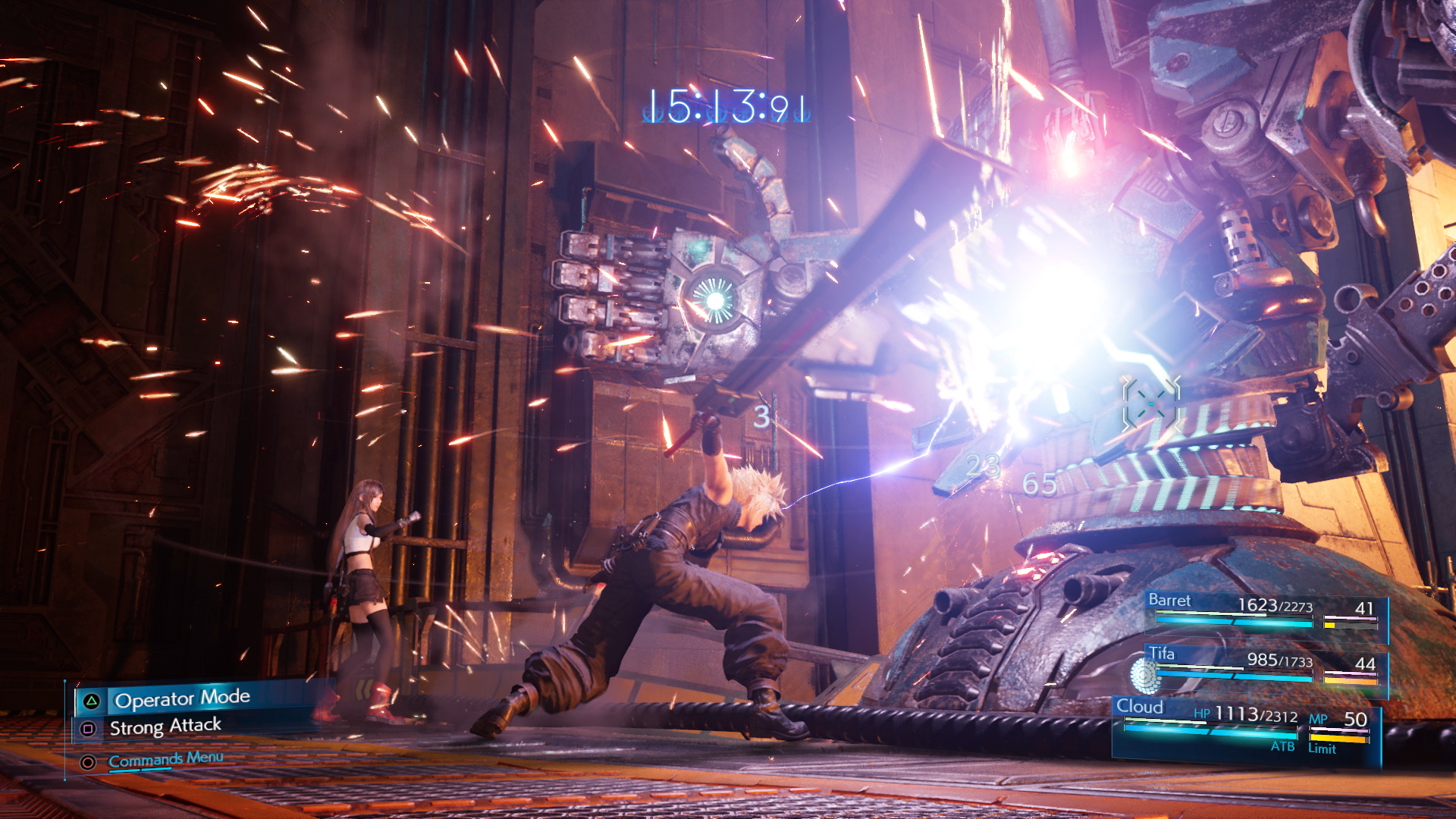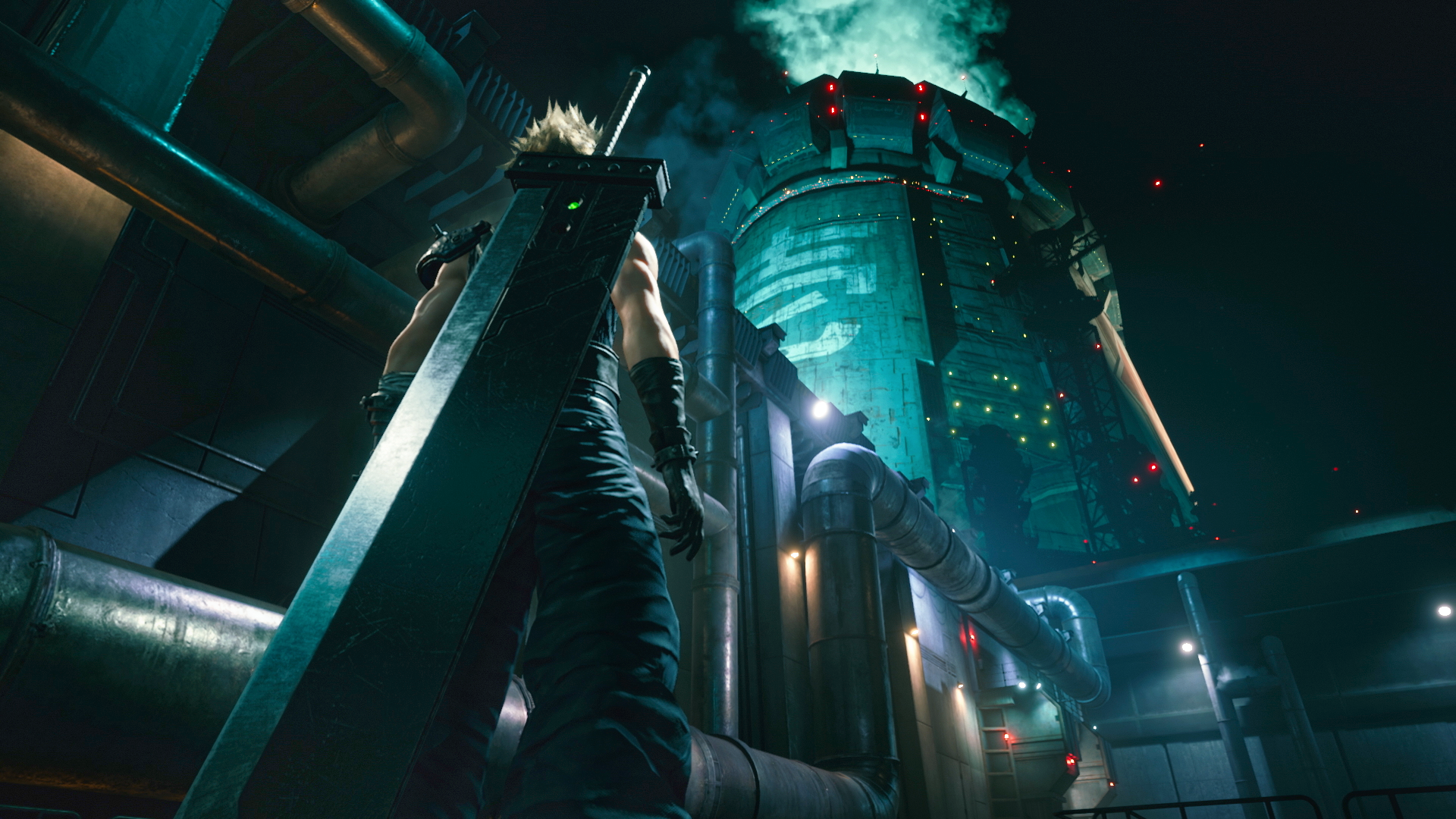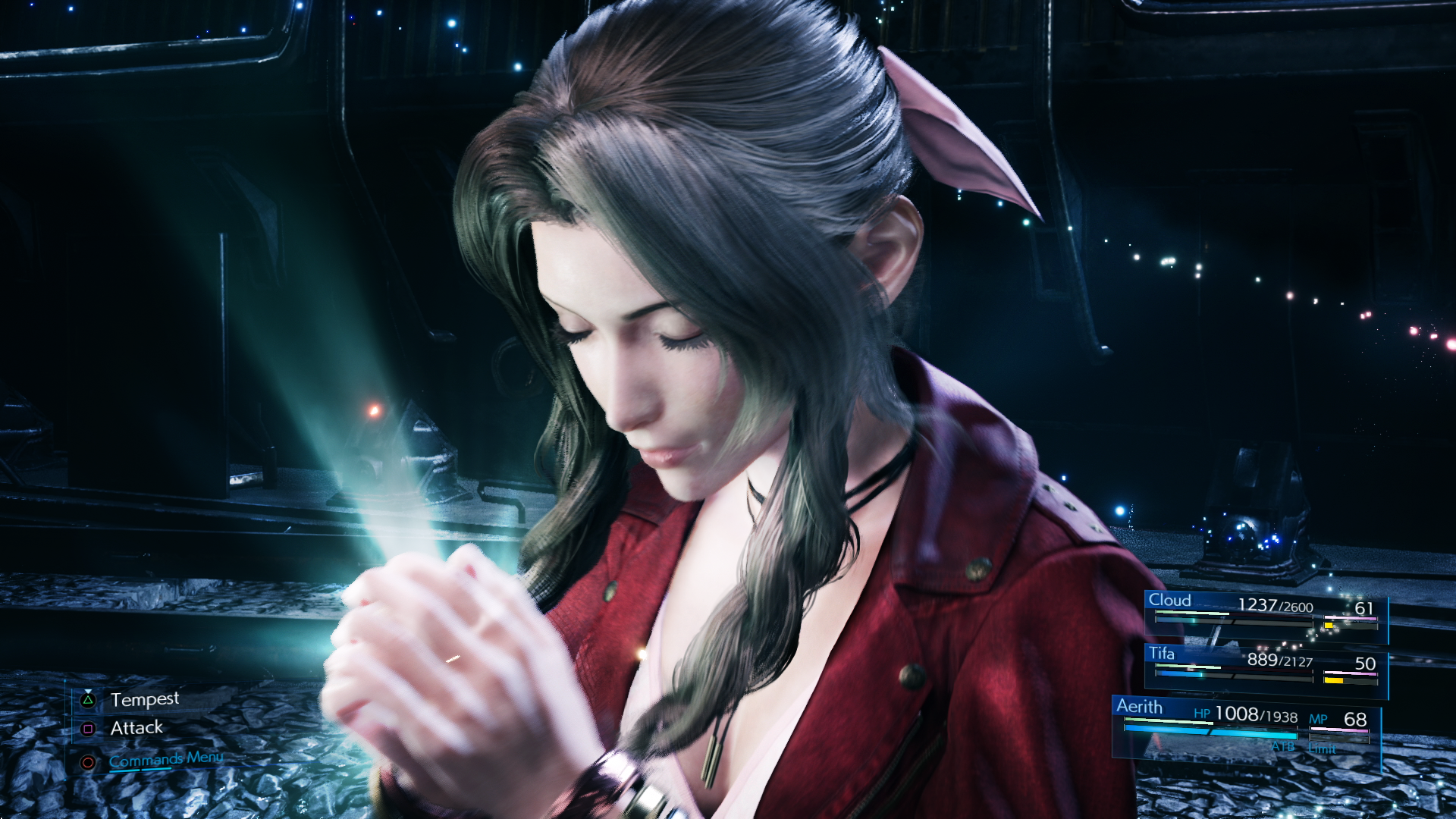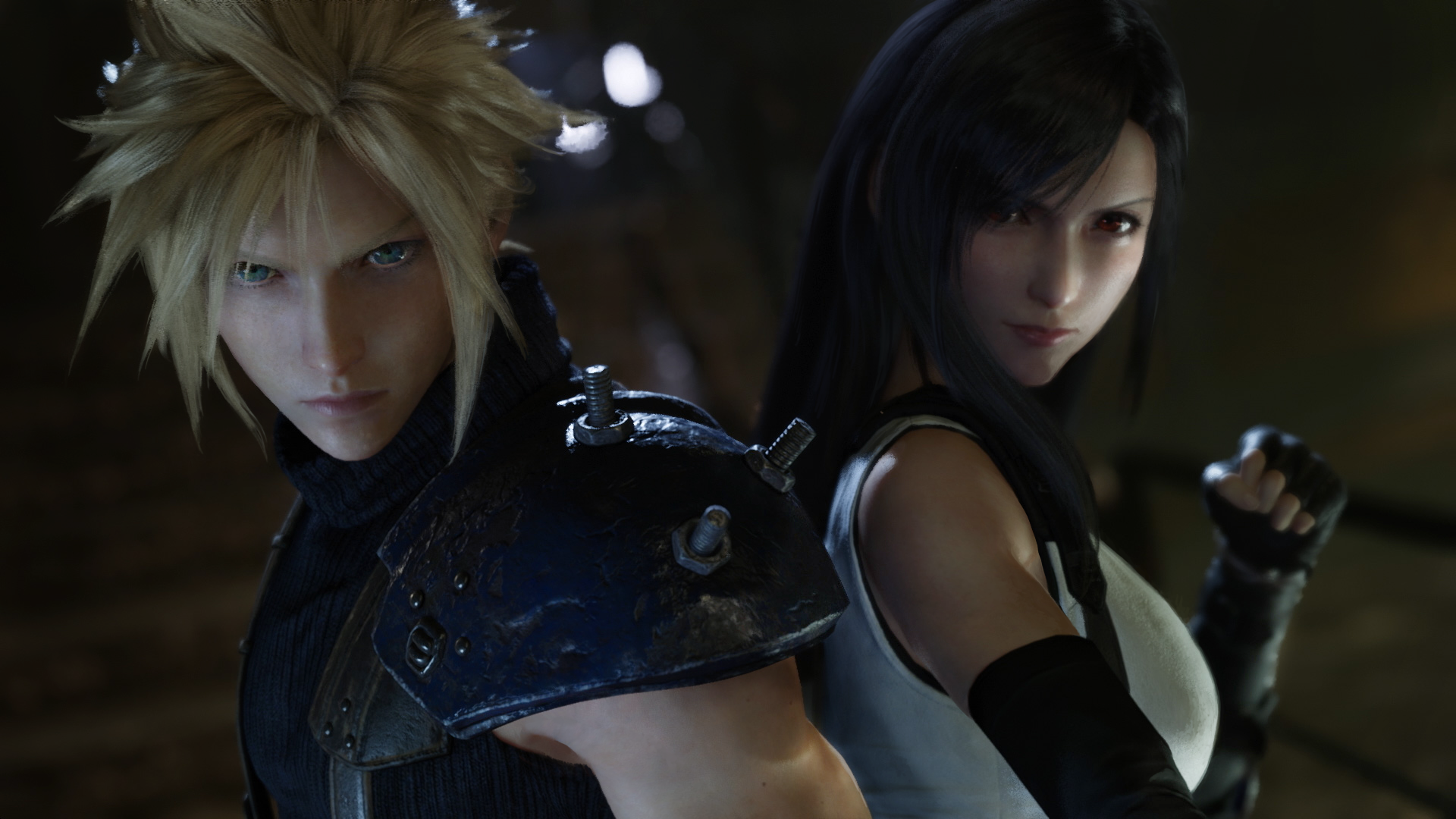The original Final Fantasy VII is widely regarded to be one of the best games of all time. Like a lot of high-rankers on such lists, FFVII arrived on the scene in 1997 alongside the first 3D-capable consoles, in this case, the PlayStation. Moreso than perhaps any other game of the late nineties, it’s ambitious characters, world and narrative far outreached the technology powering it. Take a look at screenshots of the game today and it’s almost impossible to imagine anyone taking it seriously with its extremely low-detail character models and pixellated backdrops and yet it was considered a technical marvel at the time. Perhaps most significantly of all, it showed the industry that big-budget JRPGs could be successful in the West. Final Fantasy VII: Remake is Square Enix’s chance to fully realise the city of Midgar and the tale of Cloud Strife and crew, an extremely daunting task given its legacy. So have they done it justice, or was this a story best left untouched?
You play as Cloud Strife, a former soldier turned mercenary, who’s assisting a group of freedom fighters called Avalanche. The mission: destroy a Mako reactor, one of several that power the enormous city of Midgar. Avalanche believe Mako to be the lifestream of the planet and are fighting against the sinister Shinra Power Company in order to stop mankind’s dependence on a resource that, if left unchecked, will bring about the end of the world. Don’t you just hate it when modern games shoehorn politics into everything? Not like the old classics…
The themes being explored here are as depressingly relevant today (if not more so) than they were in the late nineties, and yet it’s not the only element at play within the narrative. Final Fantasy VII: Remake explores ideas of family, friendship, loyalty, class, privilege, gender identity among others. It’s a complex game set in a complex world and yet the script, performances and direction remain solid throughout. A lot of JRPGs get bogged down in the mechanics and history of everything and end up feeling like you’re listening to someone’s half-formed fantasy novel. This remake is cinematic, action-packed, over the top, concise, emotional, wacky and, there’s no other word for it, cool all in the same breath and it’s largely thanks to the fantastic writing.
As a reluctant Cloud gets caught up in the various political schemes and hidden plots of Midgar he’s joined by Tifa and Barret, both members of avalanche and residents of the Sector 7 Slums, and a little later Aerith, a mysterious florist who needs a bodyguard. Each of these characters are delightful and watching them interact with each other was a joy from beginning to end. It is a shame that Barret is only slightly less of a caricature than he was in the original, especially because he is as well written as the rest and the most radical when it comes to Avalanche’s goals. An opportunity was definitely missed to do something a little more nuanced with this performance.
Visually, Final Fantasy VII: Remake is a bit of a mixed bag. Character models, animations, lighting and particle effects are phenomenal, like, absolutely gorgeous. But a lot of textures and environment clutter are laughably bad. You’ll be going through a level surrounded by piles of scrap metal and it just sort of looks like bumpy brown hills. Cups or books on tables will be vague, blocky shapes instead of easily recognisable objects. Now, a lot of open-world games suffer from this problem but that’s largely due to how vast and free their worlds are; sacrifices have to be made so that everything runs properly. Final Fantasy VII: Remake is a big game, but it’s levels are quite linear and contained and so it’s strange that sections of this game are so damn ugly.
A thought that wouldn’t leave my mind was that, outside of the main cast of characters, the vast majority of NPCs filling the streets of Midgar looked like Sims. They’re low detail and about as generic as you can imagine aesthetically. With the main characters being so beautiful and the city they live in being so fascinating, it was always jarring coming across these regular-ass people in t-shirts and cargo shorts. While it wasn’t as much of a problem, when comparing the environments of the original to the remake, there is certainly a loss of charm and character. Part of me wonders if, with high-tech modern graphics, it’s far more difficult to make shanty towns and garbage heaps look interesting, but considering how much of this game takes place in and around shanty towns and garbage heaps, I do wish they were a little more visually interesting.
This complaint is off-set by the sense of scale this game manages to capture. At certain points in I just had to stop everything for a few minutes to take in the sights. Final Fantasy VII: Remake utilises enormous 2D skyboxes to great effect. These backdrops are simultaneously hugely effective in conveying the sheer size of Midgar and your current position in it, as well as being a wonderful throwback to the original, which largely involved 3D characters moving across 2D environments. These moments were always stunning and made me wonder why this technique isn’t used as much these days.
There are a handful of chapters that allow you to take a breath, check out the local town, upgrade your weapons, buy some items or do some sidequests. These sidequests are rudimentary in premise and design and vary greatly in quality. Some of them have great character moments, others have a cool new enemy to fight, but for the most part, they’re entirely forgettable. It doesn’t help that the towns are rather uninspired and not all that exciting to explore, which is a disappointment given the potential of fleshing out the seedy underbelly of Midgar.
The combat is an interesting mix of real-time styles of more modern JRPGs (such as Final Fantasy XV) and the turn-based style of yesteryear (and the original FFVII). You run around and mash Square to attack, with Triangle being a kind of alternate attack mode (for Cloud it allows him to attack faster but move around slower), you can block with R1 and dodge with Circle. Pressing up or down on the d-pad switches characters (each with their own weapons and attack styles) and pressing X will actually pause combat and allow you to select abilities, spells or items for any character as long as you have ATB. ATB (Active Time Battle) is a gauge that fills up as you attack and take damage and is the resource you need to use items, abilities or spells.
For the most part, this combat system is rewarding and fun, however I did encounter a number of frustrations. One is that you can miss with abilities, now, I’m not about to say that everything you do should hit the enemy automatically, but I just wish the game would work with you a little more than it does. If I wind up a massive sword attack with Cloud and I’m right next to the enemy, but then the enemy does some weird movement because of the way it animates and Cloud whiffs big-time, that just feels bad. Not only does it feel bad, but there’s also not really anything I could’ve done to prevent missing. There’s no way I could’ve known that the enemy was gonna move in that specific way at that specific time and there’s no way to cancel my attack once it starts. The second annoyance I had was that your attacks and spells can be interrupted by taking damage, not only that but any MP (the resource used to cast spells) or ATB you used for the interrupted attacks will be gone. I understand that preparing an attack at the wrong time should be punished, but I wish whatever spell you lined up completed and you took damage, rather than the spell not happening AND you losing MP/ATB for it too.
In a more general sense, the game can feel somewhat sluggish at times. If a game like Assassin’s Creed, which lets you climb anything you want and pick up items without your character having to stop is ‘smooth’, then Final Fantasy VII: Remake is ‘sticky’. Everything from climbing ladders to pulling levers to sitting on a bench to restore HP/MP is slow and clunky. There are also an absurd amount of sequences where you hold forward to slowly move through narrow gaps or crawl underneath rubble. Some of these are obviously to disguise loading, but there are just as many that are there for no apparent reason. This vibe comes through in combat too, with a lot of encounters ending with Cloud and the gang pinned up against a wall, the enemy filling the screen and attack after attack knocking you to the floor.
Most of this sluggishness becomes a real problem in the ‘dungeons’ between towns or story beats, and this is the other rather lacklustre element of this game: the padding. It seems almost inevitable when you make an entire game about just the opening of a 40-50 hour JRPG that there will be padding, and while not all of it feels like a waste of time, a significant chunk of it does. It’s usually when the characters have to get from A to B but have to take the road less travelled because the road frequently travelled is full of guards or blocked by debris. These sections are usually destroyed freeways, old factories or sewers and each of them are about as visually interesting as they sound, filled with combat encounters and extremely uninspired puzzles. There were multiple instances where, upon completing one of these sections, it would dawn on me that everything I just played could’ve been cut without any negative impacts.
The peripheral activities aren’t all bad, and indeed there’s a decent amount of mini-games both optional and built into the main story. Vehicular combat, breaking into a house, darts, squatting competitions… These activities would often take me by surprise and are a great homage to the original that was somewhat famous for the amount of off-kilter and surprising activities you could take part in. They may vary in quality but I’d take a mediocre surprise over no surprises whatsoever, especially in a game that’s 30-35 hours long.
The soundtrack is fantastic, and while I wasn’t super familiar with every song from the original going into this, the ones I did recognise have been re-imagined wonderfully here. The sound design too deserves a mention, whether it’s in the throes of chaotic combat or during one of the many astounding cinematics, everything is crisp and clear.
Final Fantasy VII: Remake is a game with one heck of a legacy to live up to. Despite this, you can tell that Square Enix had a blast revisiting this world and these characters. There’s a certain confidence to the narrative, dialogue and characters that, when coupled with the pure spectacle of everything, makes this game worth checking out even if sections of the game feel padded or somehow underdone. This remake blends the old with the new in every facet of its design, and while it doesn’t always succeed, the end result is a title that feels both familiar and altogether new. It’s action-packed and cinematic like a lot of modern third-person adventure games, yet it isn’t afraid to slow right down to focus on character or a sense of place, like classic old-school JRPGs. It captures and expands upon the tone and themes of the original in clever and natural ways, even managing to successfully incorporate classic Final Fantasy tropes into a far more grounded world. When all is said and done, Final Fantasy VII: Remake is a triumph and an extremely ambitious step for modern JRPGs. There’s certainly room for improvement, but whether you’re a diehard fan or a total newcomer (or somewhere in the middle like me!), you owe it to yourself to check this one out.
Rating: 8.5/10

